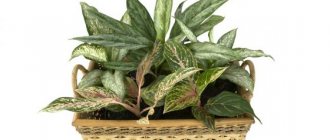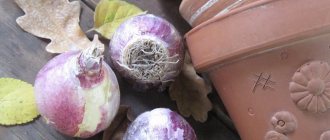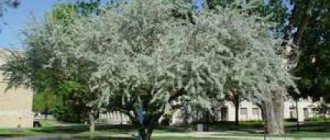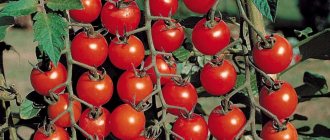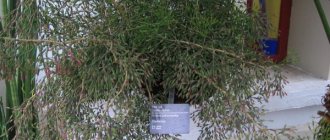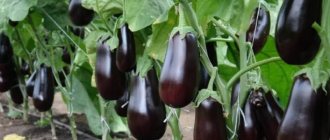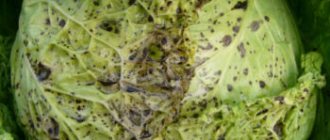What is a trimmer attachment for weeding potatoes?
A trimmer is a device that runs on electricity or gasoline. The working part of the device is attachments, which change depending on the purpose. The equipment saves time and effort for summer residents and is highly productive.
What does it look like
Trimmer attachments are divided into two types:
- Disk. The working part consists of two pairs of cutting discs.
- Serrated. The working part consists of cutters arranged sequentially on the shaft.
The choice of nozzle depends on the type of soil. Disc ones are used mainly on heavy soils. They are distinguished by their rigidity and strength. Tooth-type nozzles are used to cultivate light, loose soils. They are much lighter in weight than disk ones.
Principle of operation
The operating principle of a trimmer with a weeding attachment is as follows. The transmission of torque from the engine to the hitch is carried out through a shaft arranged in the rod. The knives penetrate the soil, pulling out the weeds along with the root system from the soil. The weeds themselves remain on the surface.
Important! The main principle of operation of the weeding nozzle: it does not cut off green vegetation, but pulls it out along with the root system.
Pros and cons of the method
Weeding a garden with a trimmer, and especially the area where potatoes grow, has its own characteristics and specifics. First of all, you need to pay attention to the fact that you need to choose the right tool for the job. It is preferable to choose powerful four-stroke engines as a working engine. Such brush cutters have lower gas consumption and greater productivity compared to two-stroke ones. For two-stroke engines, the recommendations boil down to choosing a higher engine power; the more powerful the engine, the more efficient the work.
Weeding potatoes, unlike making hay or mowing the lawn, is a more labor-intensive process, so you need to be prepared for the fact that after work not only your back, but also your arms and legs will hurt. The fact is that during work you will have to keep the nozzle suspended, preventing the lugs from completely burying themselves in the ground. In addition, you will have to move the unit along the surface from right to left, which also requires significant effort.
But from an economic point of view, such potato weeding will be much more effective than manual weeding - in a season, using a cultivator, you can cultivate a much larger area than with your hands. In this case, repeated processing will be required after a longer period of time.
Alas, there is also a minus. This is a lot of gas mileage. In normal mode, gasoline consumption is usually 0.44-0.92 liters of combustible mixture per 1 hour of operation of the unit, depending on the design and type of engine. With the device installed, this figure increases by approximately 35-40%. So you have to choose either saving time and quality of work or saving money.
Cultivator attachment in action
Types of construction
The design of such a device is usually equipped with one or two pairs of cutting parts. Instead of a gearbox, they are attached to the trimmer at the bottom of the rod or near the motor. The brush cutter works by burning liquid fuel.
Types of structures:
- Cultivator. It is considered the most popular attachment. Its advantage is that it simultaneously weeds and loosens the soil. The cultivator consists of disk elements that are placed on one axis.
- Three- or two-blade knife. Used for cutting weeds. It is a metal plate with two or three pointed blades along the edges.
- Trimmer head with fishing line. Designed for cutting weeds. Treats row spacing. For work, two types of fishing line are used: circular and faceted.
Choose the right attachment for your device. Too heavy options will overheat the engine.
Mounting options
The following methods are used to secure the working part:
- near the engine instead of a rod;
- instead of a gearbox under the rod;
- a method in which the rod is disconnected in the middle.
The number of slots on the end of the rod is different for each model. Therefore, when choosing a nozzle, pay attention to this.
Kinds
Depending on the type, the device may or may not have cutters. Based on this feature, it can be classified into gear or disk. Products of the first type are characterized by the presence of cutters, which are located on both sides of the drive shaft. The second options work using cutting discs. However, the presence or absence of cutters does not affect the functionality - cultivator attachments for a gasoline trimmer are purchased for loosening the soil.
The differences between varieties lie in the type of soil that the cultivator attachments themselves can handle. For example, gear-type varieties are lighter in weight, however, because of this they are not able to process difficult soil. Disc analogues can work not only with light soil. These nozzles are characterized by greater rigidity, they are stronger and more durable.
The best models and their prices
When choosing trimmer attachments, first familiarize yourself with the manufacturers and design characteristics. Pay attention to value for money. Start monitoring reviews of the model you like. We'll tell you about the best models of attachments on the market.
KAAZ Kat-MC250P
Refers to cultivator attachments. Equipped with a subsoiler. Suitable for use in small areas.
Characteristics:
- manufacturer - Japan;
- brands: trimmer ECHO PAS-Tiller Cultivator, brush cutter PAS-265ES;
- price: 9990 rub.;
- knife material: hardened steel;
- Dimensions of the working body: width – 24 cm, depth – 36 cm.
KR400MP MAKITA 195710-3
Designed for small areas. The working part consists of cutters.
Characteristics:
- manufacturer - Japan;
- brands: EX2650LH, DUX60Z;
- price: 17160 rub.;
- knife material: metal;
- Dimensions of the working body: width – 16 cm, cutter diameter – 23.3 cm.
Milling type working body
Designed for weeding, which carefully digs up the soil, facilitating the penetration of moisture and nutrients and saturating it with oxygen.
Characteristics:
- manufacturer – Taiwan;
- brands: for TAC lawn mowers;
- price: 7900 rub.;
- knife material: steel;
- power supply: petrol engine;
- weight: 5 kg;
- Dimensions of the working body: width – 18 cm, cutter diameter – 20 cm.
Additional attachments
In addition to the cultivator attachment, stores have many other devices that are mounted on the trimmer, these include:
- Drill. When installed on a gasoline trimmer, you can work without electricity.
- Lopper. It works on the principle of a hacksaw.
- Gardening scissors. With their help, it is easy to trim bushes, trees and tidy up hedges.
- Aerator. Destroys the crust on the surface of the lawn.
- Height cutter. Using this attachment you can remove branches at a height of up to 4 meters.
- Snow blower. Designed for removing snow from garden paths and areas.
The downside of all these useful attachments is their high price. Also, when equipped with any attachment, the weight of the trimmer will increase by 5-6 kg; not everyone will be able to work with such a tool.
To make your gardening easier, you need to purchase several different trimmer attachments. If your budget is limited, then you can make accessories for brush cutters yourself.
How to weed potatoes correctly with a trimmer with a special attachment
Timely and properly carried out weeding of potatoes will ensure the active formation of leaves and tubers of the crop. A trimmer with attachments will help you quickly and efficiently remove weeds.
Basic rules
To weed potatoes using a trimmer, several rules are followed:
- Before work, put on equipment (goggles, respirator) that will protect against dust and small particles.
- Weeding is carried out regularly once every 14 days.
- Use the device with plant heights up to 20 cm.
- The event is carried out in dry weather with the aim of mulching the plantings.
- Do not deepen the cutters too much. A processing depth of up to 2 cm is sufficient. This will provide the soil with oxygen and remove dried crust.
- Do not use a device with low power for a long time - take breaks to avoid overheating of the engine.
- After treatment, the working part is disinfected in order to get rid of pathogens.
Precautionary measures
Safety rules when using a trimmer to weed potatoes:
- Use metal blades only on trimmers with a straight shaft. For a curved rod, use plastic knives.
- Be sure to read the instructions before use.
- Before starting work, check that the device is working properly.
- Wear protective equipment before starting work.
- Carry out weeding in dry weather.
- Fill gasoline-powered tools with fuel to a level of 1 cm below the lower edge of the filler neck only in the open air, with the engine turned off and cooled.
- Warm up the engine at medium speed.
- Use the tool only for its intended purpose.
Weeding with a walk-behind mower: getting to know the basic rules
- Before you begin processing, you should wear a protective respirator and goggles, since the cutters rotate extremely quickly, raising a cloud of small particles and dust;
- Weeding should be done at a time when the weeds are small. Experts recommend carrying out this procedure once every 2 weeks;
- To clean the land, you need to choose a warm, clear day so that the torn vegetation can immediately dry and turn into organic fertilizer;
- Under no circumstances should cutters be immersed to a depth of more than 0.5–1.5 cm. By adhering to this rule, a person will be able to break up the dried crust and supply the soil with the necessary portion of oxygen and nutrients;
- When using a low-power unit, it is advisable to periodically give it a rest to avoid damage due to motor overheating;
- After the end of the season, the nozzle must be treated with a disinfectant to get rid of possible pathogens.
If you do not forget about these points, then weeding will proceed quickly, efficiently and without problems. You need to hold the device as usual and make sure not to touch the tubers and tops.
Advantages and disadvantages of use
Advantages of using a trimmer during weeding:
- speed of task completion;
- high quality weeding;
- copes well with young weeds;
- loosens and enriches the soil with oxygen;
- weeding with a trimmer refers to organic farming;
- possibility of weeding in small areas;
- The nozzle is equipped with a protective casing.
Disadvantages of using a trimmer for weeding:
- the weight of the device increases;
- the cutter does not allow you to press the blades close to the soil;
- there is constant vibration and noise during operation;
- Long-term cultivation of land using this device is unsafe for health due to gasoline vapors.
Weeding potatoes with a trimmer in organic farming
While chemists are developing increasingly toxic herbicides, and weeds are successfully adapting to them, supporters of organic farming argue that the soil should be loosened as little as possible, and traditional weeding is generally a useless exercise.
Weeds absorb useful substances that gardeners use to fertilize their beds. If weeded weeds are removed from the site, the soil will lose a certain amount of microelements. And if you cut the weed stems at the root (but only before the seeds form) and leave them to dry in the beds and between the rows, they will act as mulch, attract beneficial worms and insects, and retain moisture. Of course, after some time new shoots will emerge from the roots. But in place of the cut one, only one weed will grow, and if the root is cut during weeding (and it is difficult to completely remove the roots from the ground), then a new plant will sprout from each piece.
When weed shoots are periodically mowed, their roots will become depleted and die, and new weeds will have nowhere to come from, unless the wind carries seeds. The only exception is old wheatgrass, whose roots must be carefully weeded out, as they can pierce through potato tubers.
Another method of organic farming is sowing green manure. Rye, barley, oats, and phacelia significantly improve the soil structure (and at the same time suppress weeds), but they need to be mowed when the potato seedlings reach 15–20 cm in height.
Cut stems of green manure are used to mulch the beds, and the roots die and rot during the season. The most convenient and fastest way to mow weeds or green manure is with a trimmer: this way there is less chance of damaging cultivated plants.
Is it possible to make such a nozzle with your own hands?
It is not recommended to make a weeding attachment by hand, since it is difficult to select its width and the diameter of the cutters in such a way that the trimmer motor will not be damaged. But the price factor has a great influence on summer residents.
Craftsmen offer options for making attachments with your own hands.
Necessary materials:
- metal sheet 5 mm thick;
- nails;
- welding machine;
- metal cutter;
- fittings
Stages of manufacturing a three-bladed nozzle:
- Take a sheet of metal.
- Draw circles with a diameter of 32, 22 and 11 cm.
- Cut them along the contour and make holes for the working shaft in the center of each circle.
- Take the reinforcement and weld the discs at a distance of 1-2 cm.
- Take nails and weld them to the discs.
- It turns out to be an excellent homemade hedgehog attachment.
When working with homemade working parts, be sure to use a protective cover on the trimmer.
Do-it-yourself universal cultivator from a brush cutter
Trimmer attachment Support wheel
The new support wheel for the trimmer makes it much easier to work with the trimmer with different attachments. This attachment can be attached to the trimmer shaft in a variety of positions, providing versatility and adaptability. The support wheel allows you to maintain the same cutting height, as well as the same cutting depth and width when using the edger on flower beds and garden paths. The attachment is equipped with two support wheels for working as an edger or one rotary wheel for working as a trimmer. The support wheel can also be used with a blower or brush.
Reviews
Before you start weeding with a trimmer, evaluate your capabilities. Many summer residents share their experiences.
Ivan, Minsk: “I think that with modern technologies it is imperative to use them. But their use must be approached wisely. For example, at the beginning I weed the potatoes exclusively with a trimmer, and then I go through them with a walk-behind tractor and cut the ridges. The potatoes always turn out great.”
Vitaly, Novgorod: “I have a small potato production farm. Recently, I have mechanized potato weeding, which has helped reduce labor. It turned out to be both fast and cost-effective.”
This is interesting:
The nuances of storing potatoes in a vegetable store.
Treating the stomach with potato juice.
What caliber of potatoes are there (table) and what does it mean.
Chopper for trimmer
For many summer residents, weeding is problem No. 1. Especially if the plot was purchased recently, and before that it had not been cultivated for a couple of years. And gardeners often dream of a mechanical hoe. It won't be difficult to do if you have a trimmer available. This attachment is attached to the trimmer according to the principle of a trimmer knife.
Making a hoe attachment
Cut a circle out of a thick sheet of iron (preferably stainless steel), there should be a landing hole in the center, and holes should be drilled on the entire surface. Secure the sharpened bolts in them using a washer and nut. The result is a design that resembles a hedgehog. It is with these very thorny bolts that weeding will be done.
Mounting methods and design
Modern cultivator attachments can be made in two versions:
- Toothed, in which the cutters are located sequentially on the shaft;
- Disc, when several cutting discs act as cutting organs.
Despite the different names and designs, by and large the fundamental difference lies only in the type of ripper unit.
Toothed trimmer attachments are lighter and therefore better suited for processing light soils. As for disc models, they are used to loosen heavier soils, as they have greater rigidity.
The torque is transmitted to the cultivator attachment from the engine thanks to a shaft, which is arranged using a special rod. The latter, unfortunately, often has to be purchased separately.
The unit in question cannot be called interchangeable, and the number of slots on the end of the rod can vary from 7 to 9. Based on this, when buying a cultivator attachment, for example, from Oleo-Mac, you should know that it is not suitable for working with a Husqvarna brand trimmer , as well as vice versa.
The spline method of fixing cutters or discs to the shaft provides for the free displacement of the cutting elements, due to which the soil will be loosened over a fairly wide coverage - 200-250 millimeters. This option is excellent for cultivating land on the site, since it eliminates the large amplitude of displacement of the rod during operation. In addition, this method allows you to reduce or completely eliminate restrictions on the density of beds.
When processing long beds, the process of working with the nozzle and trimmer becomes even more convenient, since in this case you will have to make turns much less often.

